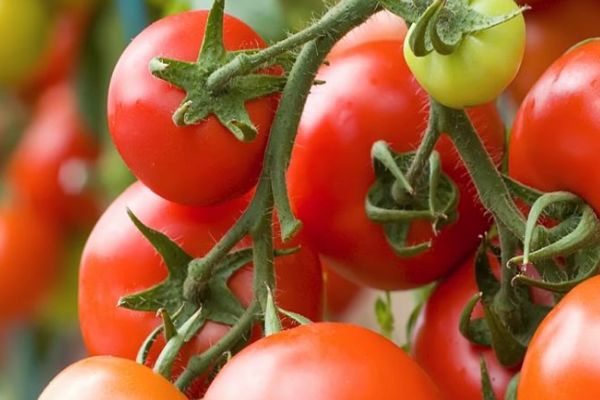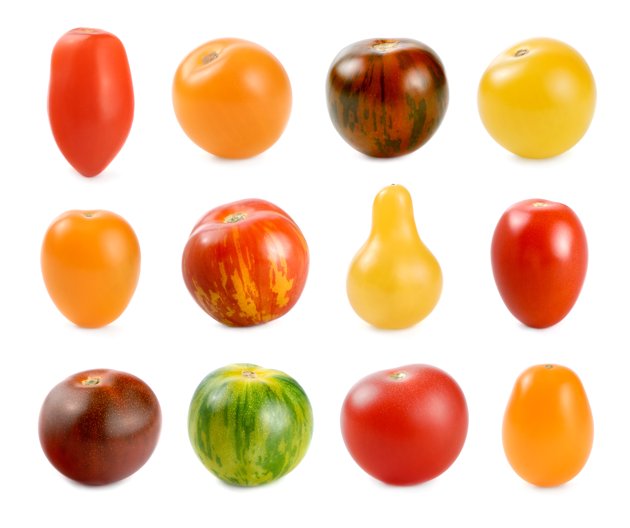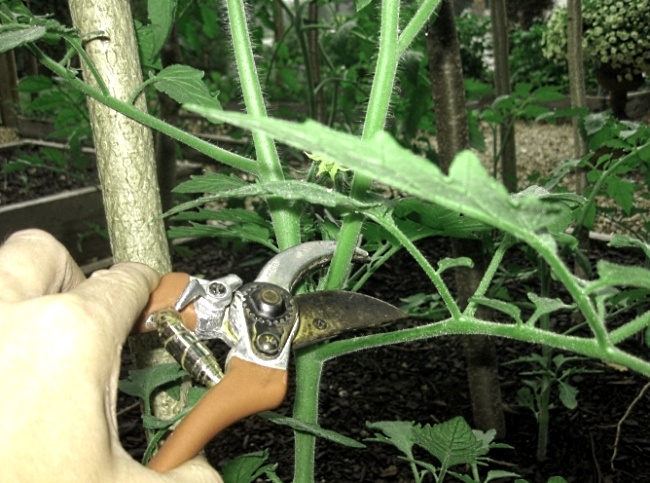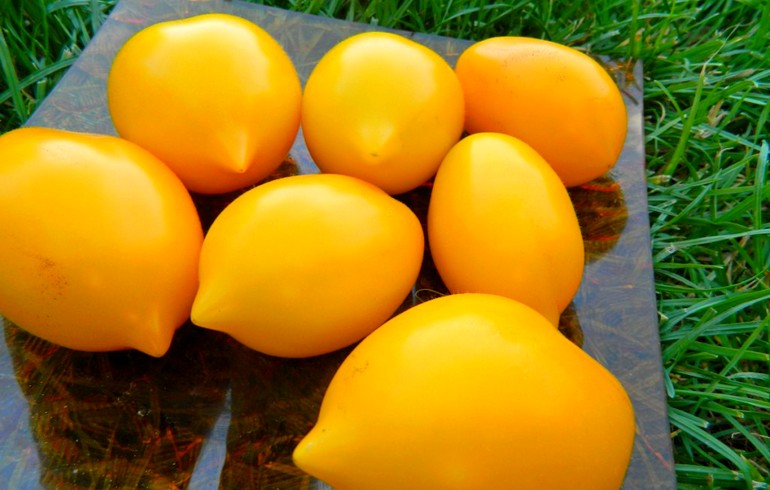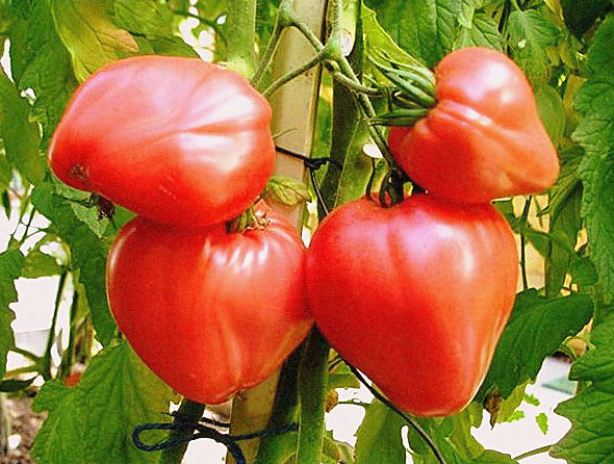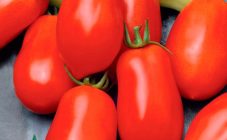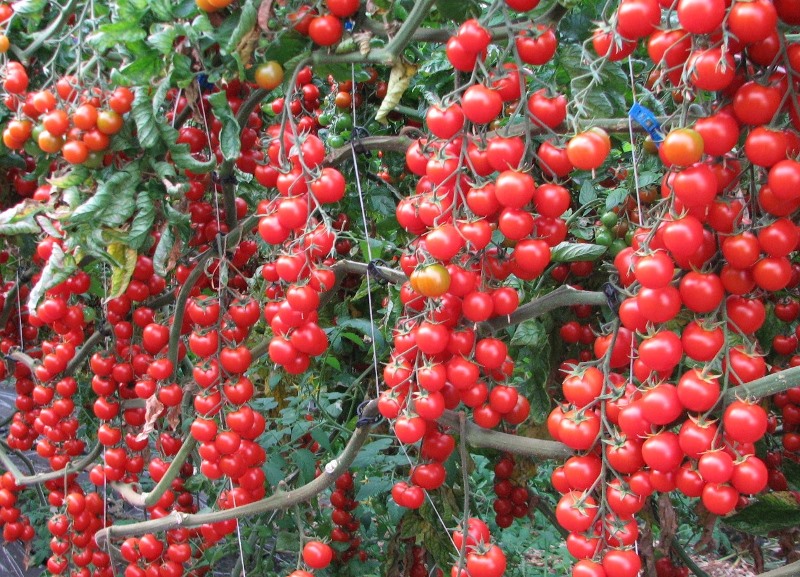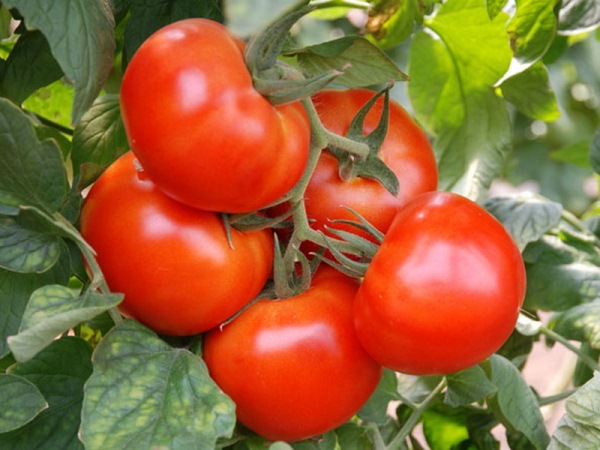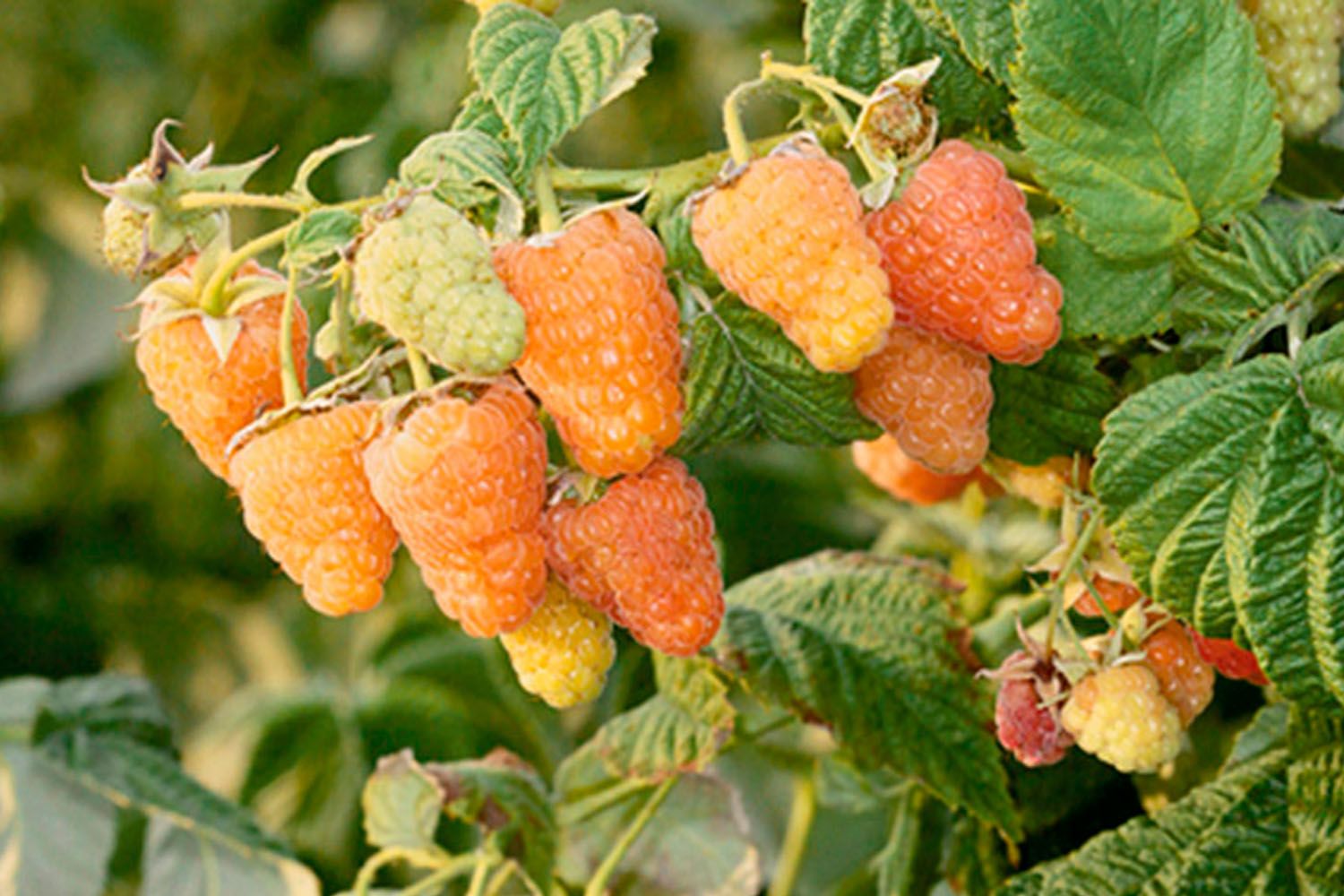Content:
Hybrid tomato Miracle bunch (characteristics and description of the variety are below) appeared on the market of vegetable hybrids recently, but has already gained popularity. This early maturing indeterminate hybrid was included in the register of the Russian Federation in 2012 and is recommended for personal plots in private households.
The fruits have excellent taste and are used for salads, decorating dishes, various types of preservation and fresh.
Breeding history
The hybrid belongs to the group of cherry varieties. The history of the appearance of small tomatoes has long been a subject of heated debate. According to one version, the first cherry "came" to Europe from America and were known to the ancient Aztecs. The second version claims that the cherry variety was bred by Israeli breeders in the middle of the 20th century.
Recent studies provide an answer to this question. Archaeological facts prove that small-fruited varieties of tomatoes are known long before the appearance of Europeans in the New World. And the first public mention of cherry tomatoes ("cherry" in translation means "cherry") is found in the book of the Swiss anatomist and botanist Kaspar Baugin "Pinax Theatri Botanici", published in 1623.
Israeli scientists, who carried out an order from the British firm Marks & Spenser in the 1980s, improved the varieties of small-fruited tomatoes, making them sweet, fruitful, disease-resistant, early ripening and shelf-stable. Currently, a huge number of cherry varieties are known, differing in fruit color, shape, type of bunch and size of plants.
Hybrid characteristics
- It is considered an ultra-early hybrid: the period from germination to mass ripening of fruits is 90 days. Some ripe tomatoes are harvested at the end of June. Fruiting until autumn. If the plant is in a heated greenhouse, then the fruiting period can last up to 1 year;
- The foliage of the bushes is small;
- A complex cluster forms an inflorescence, on which up to 50 fruits gradually ripen;
- Fruits are red, round, weighing 10-20 g. They have a shiny dense pulp, smooth skin, sweet and resistant to cracking. Fruits store well and tolerate transportation;
- Harvest - up to 3.5 kg per 1 sq. m;
- The plant is highly resistant to temperature extremes, low illumination, lack of watering;
- The hybrid tomato is almost not susceptible to fungal diseases, which are a real scourge for the nightshade family. When the soil becomes acidic, apical rot sometimes develops;
- Indeterminate - these are tall varieties of tomatoes that are distinguished by unlimited stem growth and reach 2 m.
Care and agricultural technology
Agrotechnical measures for caring for a hybrid differ little from breeding and caring for other varieties of tomatoes.
Growing seedlings
- You can grow a cherry hybrid both in the garden and in the greenhouse. It is better to use polycarbonate greenhouses, in which conditions are created for the full manifestation of the productive qualities of the hybrid;
- In middle and northern latitudes, tomatoes can only be grown through seedlings. The time of sowing seeds depends on the climatic features of the area.By the time the seedlings are planted in a permanent place, the age of the bushes for early varieties is 60 days;
- If the seed bag does not contain information about the processing by the manufacturer, then before sowing, it is recommended to prepare the seeds: soak in a solution of potassium permanganate (20 minutes) and treat with a growth stimulator. Improvements in germination are achieved by soaking the seeds in fresh agave juice. It is an excellent growth stimulant and antiseptic;
- The seeds are sown in moist soil. If possible, a layer of snow can be placed on top. The properties of melt water have a positive effect on the seeds, as well as on the seedlings that appear later;
- After the appearance of the third leaf, the seedlings dive. Plucking off the root tip will allow young plants to form a voluminous root system, with a large number of lateral roots located in the upper soil layers. Before picking, it is advisable to water the plants abundantly;
- For better survival, seedlings are placed in a shaded place for 3-4 days;
- Further care after the adaptation of the transplanted seedlings consists in watering and feeding. Plants should be watered regularly, but not poured. They are fed once every 14 days, for which complex mineral fertilizers are used. So that the seedlings do not stretch out and become stronger, it is recommended to water with a solution of the vitalizer HB 101 once every 7 days (1-2 drops per 1 liter of water).
Bedding
- Plants are planted in the greenhouse (in the garden) when there is no night frost, and the soil has warmed up enough;
- The distance between the seedlings determines how they are placed on the site:
- "Checkerboard" scheme - arrangement of plants in a checkerboard pattern. In the row between the bushes 50-60 cm, and between the rows 70-80 cm remains;
- With the "tape" method, the plants are planted in two rows parallel to each other at a distance of 30 cm. At least 70 cm is left between the rows.
- The density of the bushes with any method is 3-4 plants per sq. m. Although for this hybrid a compacted planting is allowed - 5-6 bushes per square meter;
- Before transplanting, the plants are watered abundantly and removed from the container, trying to preserve a clod of earth and not damage the roots;
- The seedling is placed in a prepared hole filled with water and added dropwise to the first true leaves. To reduce the evaporation of water, the soil around the bush is mulched or covered with dry soil;
- Seedlings are shaded from exposure to direct sunlight so that they do not burn out.
Watering and feeding
Cherry tomato varieties were bred for hot climates, so they are not very demanding for watering. After transplanting to a permanent place (in open ground or a greenhouse), the first watering is carried out in a week. In the future, it is necessary to water the plants regularly, preventing the soil from drying out. It is especially important to monitor the amount of moisture during the formation and ripening of the fruit. Cherries are prone to cracking in the absence of moisture for a long time. At the same time, excess water makes the fruits watery, and the taste is lost.
The watering regime for plants in the open field and in the greenhouse is different. A special microclimate is created in the greenhouse, the water evaporates less intensely, and a certain air humidity is maintained.It is impossible to regulate the level of moisture in the open field, so every gardener must be guided by specific weather conditions.
Watering Tips:
- the water temperature should not be lower than 17-18˚ in hot weather and 22˚ in cool;
- for normal development, tomatoes require soil moisture of 80-90%, air - about 50% (during flowering and pollination - 70%);
- you can water tomatoes both in the morning and in the evening, if the day is cloudy, then at any time;
- morning watering is performed before sunrise, so that the plants absorb water before it begins to evaporate: this method is recommended for the greenhouse to avoid high humidity and the development of fungal diseases;
- during growth, tomatoes are watered abundantly 2 times a week: 1.5-2 liters per plant;
- during flowering and fruit setting, watering is limited once every 7 days, but the amount of water is increased: 4-5 liters under one bush;
- sprinkling during flowering should be excluded and watering should be carried out at the root;
- when the fruits ripen, they again switch to two-time watering of 1.5-2 liters under one bush;
- the soil near the bushes is mulched (hay, humus, peat are suitable) to reduce evaporation and control weeds.
You can feed tomatoes 2 weeks after transplanting. For this, complex fertilizers are used. Phosphorus, necessary for plants in the formation of the root system, is a poorly soluble element. Therefore, it is necessary to take care of the introduction of phosphorus fertilizers in the fall: by the time the tomatoes are planted, it will dissolve, and the plants will be able to assimilate it. During the growing season, feeding is carried out every 2 weeks. Tomatoes respond well to foliar spraying with boric acid, calcium nitrate, nitrogen-containing compounds. At the same time, the number of ovaries increases, the period of fruit ripening decreases, the plants grow and develop better. Also, during flowering and fruit formation, tomatoes need to add potassium. On sandy soils, plants may be deficient in magnesium. It can be replenished with magnesium sulfate. You can not get carried away with fresh organic matter, especially bird droppings, which leads to a decrease in the number of ovaries.
Bush formation and pinching
A distinctive feature of indeterminate varieties - tall and unlimited growth, requires:
- tying up (in any convenient way);
- pinching the top in August, so that the formed ovaries have time to ripen.
The bush is formed into 1-2 stems. If summer is warm, it is allowed to leave 3 stems. Moreover, each trunk of the bush is tied up separately. The hybrid forms flower brushes every 2-3 stems.
A hybrid, like most varieties of tomatoes, gives a large number of stepsons. When deleting stepsons, it is recommended to follow simple rules:
- remove everything that grows from the root;
- the first shoots are removed two weeks after transplantation;
- the length of the removed stepchildren is 4-6 cm;
- a small "stump" is left from the stepson so that a new shoot does not appear in this place;
- it is better to carry out the reception in the morning and in dry weather, so that the cut site is delayed during the day.
Pollination and fruiting
The number of flowers on the bushes does not determine the yield. The main thing is for pollination to occur, and the fruits "set". Tomatoes are self-pollinated plants. But sometimes, especially in the greenhouse economy, conditions are created that limit this process:
- high air humidity leads to clumping of pollen;
- the absence of drafts reduces the amount of pollen falling on the stigmas of the pistils;
- too high temperature (30-35˚), even for a short period of time, makes pollen unviable, and poorly heated air dramatically reduces its quality.
To ensure a high pollination rate, it is recommended:
- Bring in containers with flowering honey plants that will attract insects;
- Ventilate the greenhouse, thereby ensuring air movement;
- In extreme cases, carry out artificial pollination;
- Plant fragrant flowering plants between the rows;
- Spray plants with boric acid solution or special preparations "Ovary", "Bud";
- Place a bumblebee hive in the greenhouse. The yield rises by 30-40%.
Chemical studies have shown that the concentration of nutrients increases inversely with the size of the fruit. The pulp of a cherry hybrid contains vitamins: A, B, D, C, E, K, essential oils, organic fatty acids, micro- and macronutrients, rutin and tannin.
Cherry can only be harvested at the stage of biological ripeness. Green fruits do not ripen, and overripe fruits crack or crumble.
Advantages and disadvantages of the variety
The positive qualities of the hybrid include:
- disease resistance;
- early maturity;
- long-term fruiting;
- high productivity;
- unpretentiousness.
Disadvantages when cultivating a cherry hybrid can cause:
- tallness of the plant;
- the need for a garter;
- shedding ripe fruits.
With proper care and timely adherence to agrotechnical techniques, the hybrid cherry will certainly delight its owner with a tasty, early and bountiful harvest.
